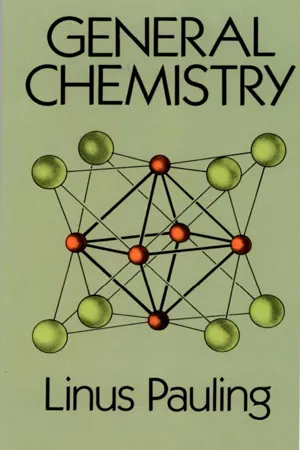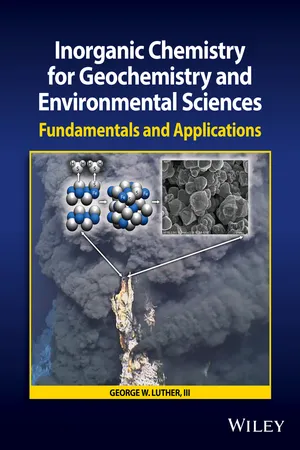Chemistry
Weak Acids and Bases
Weak acids and bases are substances that only partially dissociate in water, resulting in a lower concentration of ions compared to strong acids and bases. This means they have a lower tendency to donate or accept protons. Weak acids and bases play a crucial role in maintaining the pH balance in biological systems and are important in various chemical reactions.
Written by Perlego with AI-assistance
Related key terms
Related key terms
1 of 4
Related key terms
1 of 3
12 Key excerpts on "Weak Acids and Bases"
- No longer available |Learn more
MCAT General Chemistry Review 2024-2025
Online + Book
- (Author)
- 2023(Publication Date)
- Kaplan Test Prep(Publisher)
In this chapter, we have reviewed the important principles of acid–base chemistry. We clarified the differences among the three definitions of acids and bases, including the nomenclature of some common Arrhenius acids. We investigated important properties of acids and bases, including the important acid–base behavior of water (autoionization) and hydrogen ion equilibria. We explained the mathematics of the pH and pOH logarithmic scales and demonstrated a useful Test Day shortcut for approximating the logarithmic value of hydrogen ion or hydroxide ion concentrations. Strong acids and bases are defined as compounds that completely dissociate in aqueous solutions, and Weak Acids and Bases are compounds that only partially dissociate (to an equilibrium state). We discussed neutralization and salt formation upon reaction of acids and bases, and finally, we applied our fundamental understanding of acid–base reactivity to titrations and buffer systems. Titrations are useful for determining the concentration of a known acid or base solution. Weak acid and weak base buffers are useful for minimizing changes in pH upon addition of a strong acid or base.You’ve just accomplished a major task in the overall effort to earn points on Test Day. It’s okay if you didn’t understand everything on this first pass. Go back and review the concepts that were challenging for you and then complete the questions at the end of the chapter and MCAT practice passages to test your knowledge. Don’t be alarmed if you find yourself reviewing parts or all of a chapter a second or third time—repetition is the key to success.You are now two chapters away from completing this review of general chemistry. While we don’t want to offer our congratulations prematurely, we want to acknowledge all the hard work you’ve invested in this process. Keep it up: success on Test Day is within your reach!GO ONLINE!
- eBook - ePub
- Linus Pauling(Author)
- 2014(Publication Date)
- Dover Publications(Publisher)
14 Acids and Bases An acid may be defined as a hydrogen-containing substance that dissociates on solution in water to produce hydrogen ions, and a base may be defined as a substance containing the hydroxide ion or the hydroxyl group that dissociates in aqueous solution as the hydroxide ion. Acidic solutions have a characteristic sharp taste, due to the hydronium ion, H 3 O +, and basic solutions have a characteristic brackish taste, due to the hydroxide ion, OH −. An alternative definition is that an acid is a proton donor and a base is a proton acceptor. The ordinary mineral acids (hydrochloric acid, nitric acid, sulfuric acid) are completely ionized (dissociated) in solution, producing one hydrogen ion for every acidic hydrogen atom in the formula of the acid, whereas other acids, such as acetic acid, produce only a smaller number of hydrogen ions. Acids such as acetic acid are called weak acids. A 1 F solution of acetic acid does not have nearly so sharp a taste and does not react nearly so vigorously with an active metal, such as zinc, as does a 1 F solution of hydrochloric acid, because the 1 F solution of acetic acid contains a great number of undissociated molecules HC 2 H 3 O 2, and only a relatively small number of ions H 3 O+ and C 2 H 3 O 2 −. There exists in a solution of acetic acid a steady state, corresponding to the equation In order to understand the properties of acetic acid it is necessary to formulate the equilibrium expression for this steady state; by use of this equilibrium expression the properties of acetic acid solutions of different concentrations can be predicted. The general principles of chemical equilibrium can similarly be used in the discussion of a weak base, such as ammonium hydroxide, and also of salts formed by weak acids and weak bases. In addition, these principles are important in providing an understanding of the behavior of indicators, which are useful for determining whether a solution is acidic, neutral, or basic - eBook - ePub
- Professor Rob Beynon, J Easterby(Authors)
- 2004(Publication Date)
- Taylor & Francis(Publisher)
Chapter 2 , but these need not concern us here.◊ Nearly all pH buffers are weak acids or bases.Notice that the weak acid can be neutral (acetic acid) or carry a positive (TrisH+ ) or negative (phosphate1– ) charge. As we develop the theory of buffers, it will become clear that these charges on the buffer species have important consequences.2. Weak Acids and Bases resist pH changesA buffer is able to resist changes in pH because it exists in an equilibrium between a form that has a hydrogen ion bound (conjugate acid, protonated) and a form that has lost its hydrogen ion (conjugate base, deprotonated). For the simple example of acetic acid, the equation is:CH 3COOH ⇌CH 3COO −+H +Here, the protonated form is acetic acid, with a net charge of zero, whereas the deprotonated form (acetate) has a charge of −1. The two species are in equilibrium, and this equilibrium, in common with all equilibria, can be displaced by addition of one component.Consider a solution that contains equal amounts of acetic acid and acetate ions (10 mM acetic acid, 10 mM sodium acetate, for example). If we were to add a strong acid, such as HCl, to this solution, the added H+ would displace the equilibrium to the left. Binding of H+ to CH3 COO– ‘mops up’ the added protons (Figure 3.1 ). Electrical neutrality is preserved because every H+ that reacts with a CH3 COO– anion to form the neutral CH3 COOH leaves behind a chloride (Cl– ) anion in its place. Add a strong base, such as sodium hydroxide, and the OH- ion would react with the H+ and displace the equilibrium to the right. Electrical neutrality in the solution is sustained because for every CH3 COOH that is converted to CH3 COO– , a corresponding Na+ - eBook - ePub
- Jeffrey Gaffney, Nancy Marley(Authors)
- 2017(Publication Date)
- Elsevier(Publisher)
Table 5.1 ). Also, weak acids produce strong conjugate bases and weak bases produce strong conjugate acids.• Strong acid → Weak conjugate base• Strong base → Weak conjugate acid• Weak acid → Strong conjugate base• Weak base → Strong conjugate acidSince a weak acid has a weaker tendency to give up its proton and the conjugate base it produces has a stronger tendency to accept its proton, a competition results between the acid and the conjugate base for the proton. So, only a fraction of the weak acid molecules will donate a proton to the base, giving rise to a significant concentration of both the acid and conjugate base forms in solution. The reaction is said to be in chemical equilibrium , the state in which both reactants and products are present in concentrations which have no further tendency to change with time. This equilibrium is represented in the chemical equation by the presence of a double arrow between products and reactants, indicating that the reaction can go in both directions and both products and reactants are present;HA + B ⇌ A + HBThe concentrations of all the species depend on the strengths of the acids and bases.The Brønsted-Lowry definition of acids and bases also describes more clearly what actually happens when an acid dissolves in water. From this point of view, the dissolution of acids, such as HCl, in aqueous solution is seen to involve an acid-base reaction between the acid and water. Although HCl is a covalent compound, it can donate a proton to a water molecule to form the cation H3 O+ ;HCl aq +H 2O l →H 3O +aq +Cl −aqThe common name for this cation is the hydronium ion . It belongs to a family of ions called oxonium ions, which is any oxygen cation containing three-bonded species. Other oxonium ions have three organic groups bonded to the oxygen and will be discussed in Chapter 13 - eBook - ePub
- Eckhard Worch(Author)
- 2015(Publication Date)
- De Gruyter(Publisher)
7 Acid/base equilibria7.1 Introduction
The relevance of acid/base equilibria for aqueous systems results from the fact that numerous water constituents are acids or bases according to Brønsted’s acid/base theory (Section 7.2 ). Moreover, water itself is also involved in acid/base reactions (Section 7.3 ). Since, after Brønsted’s acid/base theory, the definition of acids and bases is based on the capability to donate or accept protons (H+ ), the pH as a measure of the proton concentration plays an important role in acid/base systems. The degree of proton release or acceptance determines the strength of acids and bases (Section 7.4 ). Furthermore, the pH determines the concentration distribution of conjugate acid/base pairs. This is in particular true for Weak Acids and Bases which are not completely deprotonated or protonated over the whole pH range. Typical examples for such acid/base systems with pH-dependent species distribution are , , and . Another important aspect is that the solubility of many solids and gases depends on pH due to the coupling of dissolution with acid/base reactions.Acids and bases can also be found within the group of organic water constituents. Humic and fulvic acids are frequently occurring natural acids. Basic amines and acidic phenols originating from natural and anthropogenic sources are further relevant substance groups.From the practical point of view, there are two types of problems with respect to acid/base systems. The first is to answer the question of what pH results after dissolution of a defined amount of an acid, a base or a salt (Section 7.5 ). The second problem concerns the mathematical description of the pH-dependent speciation (Section 7.6 - eBook - ePub
Rapid Review of Chemistry for the Life Sciences and Engineering
With Select Applications
- Armen S. Casparian, Gergely Sirokman, Ann Omollo(Authors)
- 2021(Publication Date)
- CRC Press(Publisher)
3 Acids, Bases, and SaltsDOI: 10.1201/9781003092759-33.1 Acids and Bases
Some substances have special properties and are so frequently encountered that they are grouped in special classes and deserve separate treatment. This is the case with acids, bases, and salts.According to the Arrhenius model, an acid is any substance that, when dissolved in water, produces or causes to produce hydrogen ions, H+ . A base is any substance that, when dissolved in water, produces or causes to produce hydroxide ions, OH− . The Bronsted–Lowry model stresses the fact that acids are proton donors and bases are proton acceptors, as well as the notion of conjugate (meaning “related”) acids and bases. The Lewis model states that acids are substances that are electron-pair acceptors and bases are substances that are electron-pair donors. This concept broadens the meaning of acids and bases considerably to include many salts that would otherwise be excluded. Realistically, since a hydrogen ion is a bare proton, it is too reactive to exist as a stable species by itself. Hence, the real acid species is the hydronium ion, H3 O+ , a protonated water molecule, that is, [H+ (H2 O)]. Acids are powerful dehydrating agents.When an acid and a base are added together, a neutralization (a double-replacement reaction) ensues, with water and a salt as the neutralization products. Quantitatively, one mole of acid, H3 O+ , exactly neutralizes one mole of base, OH− . Thus, this is true for monoprotic acids and monobasic bases. Monoprotic acids contain one H+ ion, such as HNO3 , while diprotic acids contain two H+ ions, such as H2 SO4 , and thus require two OH− ions to neutralize them. In general, polyprotic acids contain more than one ionizable H+ ion; examples include phosphoric acid, H3 PO4 , with three H+ ions, oxalic acid, C2 O4 H2 , with two H+ ions, as well as the aforementioned sulfuric acid.Acids and bases may be strong or weak. This property is determined by molecular structure and is different from concentration. A strong acid is one that dissociates and ionizes completely or 100% into its hydrogen or hydronium ions and corresponding anions, known as its conjugate bases. Similarly, a strong base is one that dissociates and ionizes completely into hydroxide ions and its corresponding cations, known as its conjugate acids. Weak Acids and Bases, in contrast, dissociate and ionize much less than 100%, conventionally less than 10%, and typically less than 5%, into their respective ions. Note that these substances are referred to as weak electrolytes, because their concentrations of individual ions are small, while strong acids and bases are strong electrolytes. - eBook - ePub
Chemistry
Concepts and Problems, A Self-Teaching Guide
- Richard Post, Chad Snyder, Clifford C. Houk(Authors)
- 2020(Publication Date)
- Jossey-Bass(Publisher)
13 Acids and BasesChapters 11 and 12 gave you an indication that all acids have certain properties in common and all bases have certain properties in common. The major common property is that acids react with bases (and vice versa) to produce salts. For example, if solutions of HCl (an acid) and KOH (a base) are mixed, the following reaction occurs.Such a reaction gives a solution that no longer has the acidic or basic properties that were evident before mixing, provided the correct volumes and concentrations were used.What then is an acid? What is a base? There are three definitions that have been developed through the years. Each has its own particular usefulness, depending upon the nature of the reactants and the conditions of the reaction. In this chapter we will discuss each of the definitions and their particular usefulness.Our discussion of acids and bases will touch on several other important concepts, including reactions of salts with water, another concentration term specially developed for acid–base solutions, and the importance of acid–base chemistry to physiological and industrial processes.OBJECTIVES
After completing this chapter, you will be able to- recognize and apply or illustrate the following: Arrhenius, Brønsted–Lowry, and Lewis acids and bases, neutralization, hydrolysis, pH, buffer solution, titration, conjugate acid or base, amphiprotic, indicator, hydronium ion, and hydrated;
- write a chemical equation for a neutralization reaction between any acid and base;
- predict whether a solution of a given salt will be acidic, basic, or neutral;
- calculate the pH of a solution when given:
- the degree of ionization of a weak acid or base and vice versa,
- Kaor Kbof the acid or base and vice versa,
- the concentration of a solution of a strong acid or base;
- solve titration problems.
ARRHENIUS ACIDS AND BASES
There are several chemical theories of acids and bases. The most familiar is that of Arrhenius. According to the Arrhenius definition, an acid is any substance that produces or increases the H+ ion concentration in an aqueous solution (remember, water is the solvent). Both HCl and HC2 H3 O2 can increase the H+ ion concentration of water. Do HCl and HC2 H3 O2 - No longer available |Learn more
- Brian M. Tissue(Author)
- 2013(Publication Date)
- Wiley(Publisher)
5.4 Acid Strength The acidity values!use or basicity (also called alkalinity) of a solution depends on both the concentration and on the intrinsic “strength” of the added weak acid or weak base. “Strength” is not an issue for strong acids and strong bases, which dissociate completely in water. p[ ] and p[ ] of a solution of strong acid or strong base depend only on the concentration of strong acid or strong base in the solution after any neutralization reaction has occurred. Predicting p[ ] and p[ ] for solutions of weak acids and weak bases is more involved than for those of the strong acids and strong bases because the former react only partially with water. However, keep in mind that solutions of weak acids and weak bases are not necessarily less acidic or less basic than solutions of strong acids and strong bases. For example, it is possible for a weak acid at a high concentration to produce a more acidic solution (a lower p[ ]) than a strong acid at a low concentration. Our measure of the relative strength of different weak acids is the equilibrium constant,. By acid “strength,” we refer to the degree to which a weak acid dissociates in water to produce and its conjugate base. The larger the value, the more readily the acid gives up its proton to water. Table 5.6 provides and p () values for selected inorganic and organic weak acids. All of the examples in Table 5.6 are monoprotic weak acids, that is, they have only one acidic proton. Table 5.7 and Table 5.8 provide more complete lists of and p values for monoprotic and polyprotic weak acids. 7 A note on the chemical formulas: I use the older COOH and COO notation to provide some indication of the structure. You will also see simpler formula such as C H O for benzoic acid (). I use the simpler formula notation for some of the anionic forms for compactness - eBook - ePub
Inorganic Chemistry for Geochemistry and Environmental Sciences
Fundamentals and Applications
- George W. Luther(Author)
- 2016(Publication Date)
- Wiley(Publisher)
Chapter 7 Acids and Bases 7.1 Introduction Acids and bases have been known since before Roman times, for their ability to transform a chemical substance into other chemical forms. For example, sulfuric acid (, oil of vitriol; vitriolic acid) could be produced by the aqueous oxidation of pyrite, which is a common mineral used for many purposes [1]. dehydrates sugar as well as metal hydrates with sometimes dramatic color changes, and also dissolves metals via redox reactions. It is normally the chemical that is produced and sold in greatest quantity in the world each year. The first base was called lye, which was obtained by leaching ashes with water producing potassium hydroxide solution. Lye is a common name for bases, which are used in a variety of purposes including wood degradation into paper or fibers and soap production. 7.2 Arrhenius and Bronsted–Lowry Definitions Common acids such as hydrochloric acid (HCl) and nitric acid were not formally prepared until about the 16th century, so formal definitions of acids and bases similar to bonding theories are relatively new. In 1884, Svante Arrhenius defined an acid as a chemical species that when dissolved in water produced the hydrogen ion,. Although useful, the definition is limited as it does not encompass a large variety of reactions and only considers water as solvent. In 1923, Brønsted and Lowry defined an acid and base reaction as one that involves a hydrogen ion transfer between two reactants. The acid is the hydrogen ion donor (the Brønsted acid) and the base is the hydrogen ion acceptor (the Brønsted base). This definition applies to all solvents and the gas phase. For example, the reaction between HCl and can occur in water as solvent or in the gas phase (an atmospheric reaction) and results in complete transfer to form the hydronium ion, - eBook - ePub
Advanced Pharmaceutics
Physicochemical Principles
- Cherng-ju Kim(Author)
- 2004(Publication Date)
- CRC Press(Publisher)
[H+] = 10-3.3 [H+] = 10-3.38 , A second iteration with gives and a third iteration [H+] = 10-3.34 [H+ ]. pH = 3.34. with yields the same Therefore,2.2.2 TITRATION CURVE OF A WEAK ACID WITH A STRONG BASE
As illustrated in Section 2.1.2, the titration curve of a weak acid with a strong base can be constructed in terms of pH versus volume of the strong base. Consider a weak acid (e.g., HA) of volume Va ; its concentration Ca is titrated with a strong base (e.g., NaOH) of volume Vb and concentration Cb . The mass balances and electro-neutralityequation can be given by:(2.23)(2.24)Substituting Equation (2.9) into Equation (2.23) yields:(2.25)Substituting Equation (2.25) and [Na+] of Equation (2.23) into Equation (2.24) gives:(2.26)Rearranging Equation (2.26) for Vb versus [H+] yields:Figure 2.3Titration curve of 50 mL of 0.01 M ibuprofen ( pK) with 0.01 M NaOH. a = 4 4.(2.27)Figure2.3 shows the titration curve of 50 mL of 0.01 M ibuprofen with 0.01 M NaOH.When a volume Va of the mixture of a strong acid (e.g., HCl) with a concentration Ca1 and a monoprotic weak acid (HA) with a concentration Ca2 is titrated with a strong base (e.g., NaOH) with a concentration Cb and a volume Vb, the charge balance and mass balance can be written:(2.28a)(2.28b)Substituting Equation (2.9) into Equation (2.28b) yields:(2.28c)Substituting Equation (2.23), Equation (2.28b), and Equation (2.28c) into Equation (2.28a) gives:Rearranging Equation (2.28d) for Vb versus [H+] gives:(2.28e)whereEquation (2.7d) and Equation (2.27) can be generalized for four possible different types of titration of strong/weak acids with strong/weak bases as:(2.29)= b 1/Kb where a 1/Ka for a weak acid and or for a strong acid or base. = a=b=02.2.3 PH OF THE SOLUTION OF SALTS OF WEAK ACIDS OR WEAK BASES
Section 2.2.1 discussed the ionic equilibria of undissociated acids or bases. The majority of commercial (or investigational) drugs are the salt forms of weak acids or weak bases. Let us examine the ionic equilibria when the salt formed between a weak base and a strong acid (HBX) is placed into solution. When the salt is placed into a solution, it completely dissociates into HB+ and X-. The ionic weak acid (HB+) is further hydrolyzed as: - eBook - ePub
- David G. Watson(Author)
- 2020(Publication Date)
- Elsevier(Publisher)
Drug molecules can be complex, containing multiple functional groups that in combination produce the overall properties of the molecule. This chapter will serve as a starting point for understanding the chemical and physico-chemical behaviours of drug molecules, which influence the development of analytical methods. The latter part of the chapter focuses on some typical drugs that are representative of a class of drug molecules and lists their physical properties and the properties of their functional groups, in so far as they are known. Calculation of pH value of aqueous solutions of strong and Weak Acids and Bases Dissociation of water The pH of a solution is defined as − log [H + ], where [H + ] is the concentration of hydrogen ions in solution. In pure water, the concentration of hydrogen ions is governed by the equilibrium: K a is the dissociation constant for the equilibrium, is known as K w in the case of the dissociation of water and is determined by the following expression: Since the concentration of water does not change appreciably as a result of ionization, its concentration can be regarded as not having an effect on the equilibrium and it can be omitted from the equation, and this means that in pure water: The pH of water is thus given by − log 10 − 7 = 7.00. Strong acids and bases If an acid is introduced into an aqueous solution, the [H + ] increases. If the pH of an aqueous solution is known, the [H + ] is given by the expression 10 − pH, e.g. [H + ] in pH 4 solution = 10 − 4 M = 0.0001 M. Since [H + ][OH − ] = 10 − 14 for water, the concentration of [OH − ] in this solution is 10 − 10 M. A strong acid is completely ionized in water and [H + ] is equal to its molarity, e.g. 0.1 M HCl contains 0.1 M H + (10 − 1 H +) and has a pH of − log 0.1 = 1. For a solution of a strong base such as 0.1 M NaOH, [OH − ] = 0.1 M and [0.1][H + ] = 10 − 14 ; therefore, [H + ] = 10 − 13 M and the pH of the solution = 13 - eBook - ePub
- Clyde Frank(Author)
- 2012(Publication Date)
- Academic Press(Publisher)
Dilution effects would lead to the same result as for the strong acid–strong base titrations; that is, a reduction in the pH break occurs. However, it is more difficult to generalize in the weak acid–strong base case because theFlow Sheet for the Calculation of Titration Curves for a Strong Acid or Weak Acid with a Strong Base Titrantdilution effect will be more noticeable as the acids become weaker. For acetic acid 0.001 F is the limit.At the midpoint for the titration of HC2 H3 O2 half of the acid has been neutralized and thereforewhich yields the relationship andThis is very useful since a rapid, moderately accurate determination of the ionization constant of a weak acid is possible by measuring the pH at the midpoint of the titration. As the strength of the acid increases or decreases from the value K a = 10−5 , the accuracy for the determination of K a by this technique falls off significantly. However, by writing a more exact expression it is possible to obtain an accurate K a even for these stronger or weaker acids.Strong Base or Weak Base–Strong Acid Titration
A titration of a strong base or a weak base with a strong acid is analogous to the strong acid or weak acid titration. The main differences are that the direction of the pH change is reversed and that the behavior of the weak base is influenced by the lack of complete ionization.If the primary goal is analysis, the limits for an accurate determination of weak bases are K b = 10−8 and a concentration level of 0.001 F. The reasons for these limits are essentially the same as those presented in the section on strong acid or weak acid titrations.A summary of the two individual reactions taking place in the titrations are as follows:A strong base–strong acid titration is calculated by determining whether the acid or base is in excess and at what concentration level. At the stoichiometric point the solution is neutral; therefore, the pH is 7.For a weak base–strong acid titration the effect of ionization must be considered. Therefore, the initial pH is given by the ionization expression for the weak base, during the titration a buffer system is present, at the stoichiometric point the solution is acidic due to the presence of the neutralization product which is a conjugate acid of moderate strength (hydrolysis), and after the stoichiometric point excess strong acid is added. A flow sheet on pages 162 and 163 provides the equations for calculating the two types of titration curves.
Index pages curate the most relevant extracts from our library of academic textbooks. They’ve been created using an in-house natural language model (NLM), each adding context and meaning to key research topics.
Explore more topic indexes
Explore more topic indexes
1 of 6
Explore more topic indexes
1 of 4











